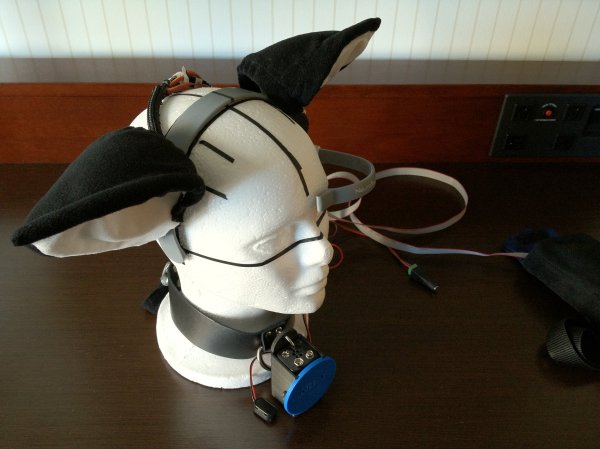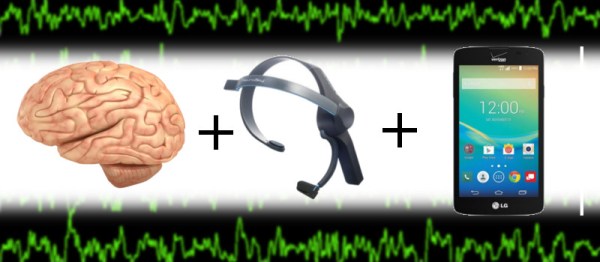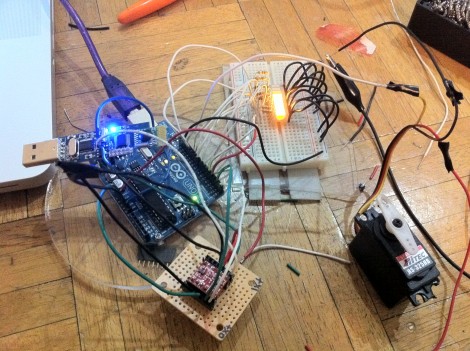As any cat owner will tell you, a cat’s ears are great indicators of its state of mind: pointed forward if they want your attention, turned backwards if they’re angry, and folded down flat when they’re afraid. Humans sometimes don cat ear headbands as a fashion statement, but sitting motionless those ears are more likely to confuse a cat than to provide any meaningful communication.
[Jazz DiMauro] aims to fill that gap by designing a cat ear headband that actually responds to your emotions. It does so by continuously taking an EEG measurement and extracting the “attention” and “meditation” variables from it. Those values are then applied to a set of servos that allow two-axis motion on each 3D printed ear. The EEG readout device is an off-the-shelf MindWave headset, which outputs its sensor data through Bluetooth. An Arduino then reads out the data and drives the servos.
Turning all this into a usable wearable device was a project on its own: [Jazz] went through several iterations to find a suitable power source and wiring strategy until they settled on a pair of lithium-polymer batteries and a single flat cable. The end result looks comfortable enough to wear, and the ears’ motion looks smooth and natural. All that’s left is to test it with real cats, to find out if they can now finally understand their human’s emotions too.
We’ve featured a few moving cat ear headbands before: one that moves along with your head’s motions, and another one with manual control. Today’s EEG-powered one shows yet another application for EEGs, which have been used for anything from invoking lucid dreaming to playing beer pong. Continue reading “These Mind-Controlled Cat Ears Move With Your Mood”





















